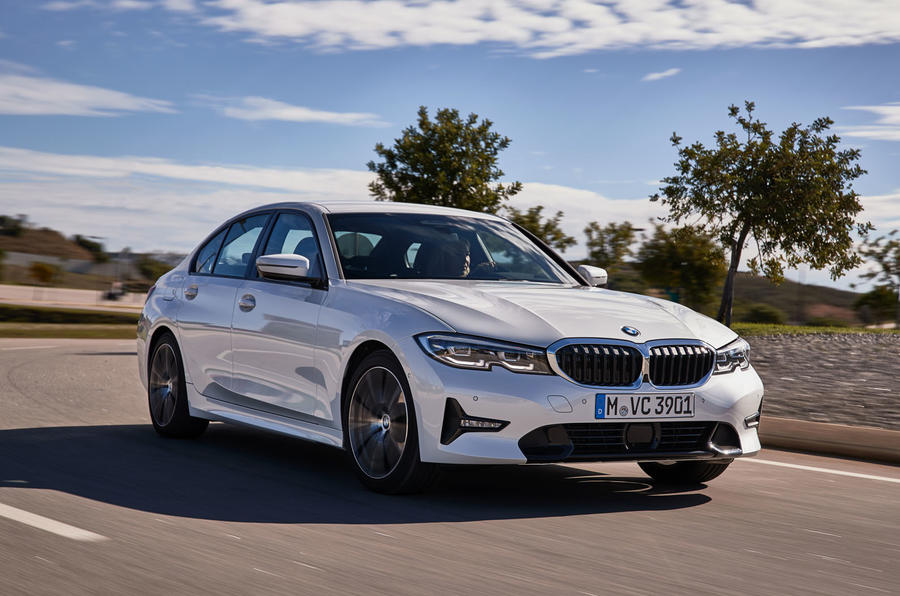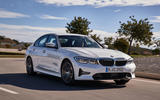What is it?
In our current era of identity politics, when some of the most powerful men and women on the planet think they’re entitled to their own facts as well as their own opinions, this is pretty small fry – and yet, as statements go, it's still a bit too revisionist for my liking.
“The BMW 3 Series has epitomized the concept of sporty driving pleasure in the global premium mid-size class for more than 40 years.” That claim is contained within the press release on Munich’s new seventh-generation Three; in fact, it’s the opening line. But it’s not true.
Similar lines of description were glibly repeated at the press launch of the ‘G20’ 3 Series a week or so ago, so prominently and so often that you almost questioned your instinct to query them. So when did the BMW 3 Series become ‘mid-size’? Hasn’t it spent most of its famous 40-year history being the world’s defining compact executive saloon? Wasn't the original version small enough that Munich didn't even consider it worthy of back doors?
Well, whatever. Apparently, by BMW’s own say so, it’s ‘mid-size’. It’s not clear when the shift happened exactly, although I’ve got a reasonable idea why. But what might it mean now, you may very well wonder, for the character of a car so many of us Brits have come to know better than that of almost any other German car in the world? That's what we're here to find out.
This latest ‘G20’ 3 Series is the first to tip-toe over the 4.7-metre mark on overall length – and, within its own particular executive saloon niche, only the current Audi A4 is longer. The three-inch growth spurt that the 3 Series has been through is actually the second significant one in as many big redesigns. The car now sits between BMW’s second- and third-generation 5 Series on overall length. Interestingly, though, it has put on more at-the-kerb centimetres over the past two major model overhauls than it did cummulatively over its first five full model generations. So if you're inclined just to shrug and say "ah well; modern cars are just bigger, aren't they?", consider that this one has grown more in the past seven years of its history than it did in the preceeding 36.
It’s partly the existence of the 1 Series that has freed BMW’s hand to add inches to what remains its biggest-selling model globally – but it’s mostly one critical, commercial reality: that China has, of late, become the biggest market in the world for this car, and now approaches three times the size and importance of the car’s next biggest single global market territory. China clearly wants the 3 Series big (let's not forget there's also a long-wheelbase version pretty much just for that market). And China quite evidently gets what it wants, even if that means buyers elsewhere in the world, so familiar with the just-so proportions of the ‘E30’ and ‘E46’, get a new car that looks, in profile, just a little bit as if a foot pump had been taken to its cabin. At least, it does to me.
Might that also be why the ‘G30’ has slightly more dressy, busy-looking body surfacing than the last Three, I wonder, as well as a bigger kidney grille that's right on the limit of appearing deliberately oversized? Does BMW’s market research suggest China will prefer the car like that? Now I’m being unkind as well as pedantic, and also generalising, I know – but I rather suspect so.




















































Join the debate
Add your comment
Run flat or not?
The big issue with ride quality of e90 and to a lesser degree the F30 is standard fitment run flat tyres especially on the UKs shattered roads and colder temperatures. From what I can see the pictures show non run flat tyres, has BMW changed it’s mind on the G20?
What nonsense!
. Run flats aren’t the problem, it’s the same for all non Winter Tyres, once the temperature goes below -7C the silicon becomes more rigid thus less grip, for the rest of the run flats are just like other Tyres, infact having driven on them for the last decade or so I’d say they’ve improved and if you get a puncture you can still drive at up to 50mph and get the drive replaced (yes, you can’t repair them) no at the roadside in Rain or worse, no dirty hands, ho irritated passengers, less stress.
Oh dear, the usual trolls
Oh dear, the usual trolls spouting their usual dire nonesense. These pages really do need a moderator to wipe them out.
It's midsize
It's "midsize" because, at almost 5m long, it only just fits into a normal car park space.
It's barely shorter than a 5-series.